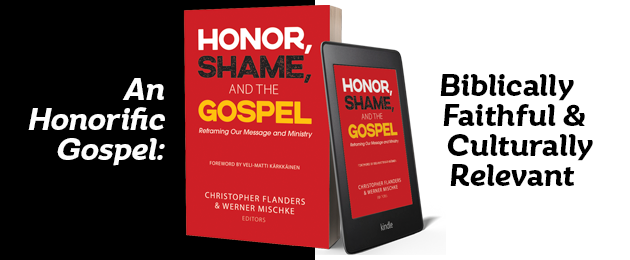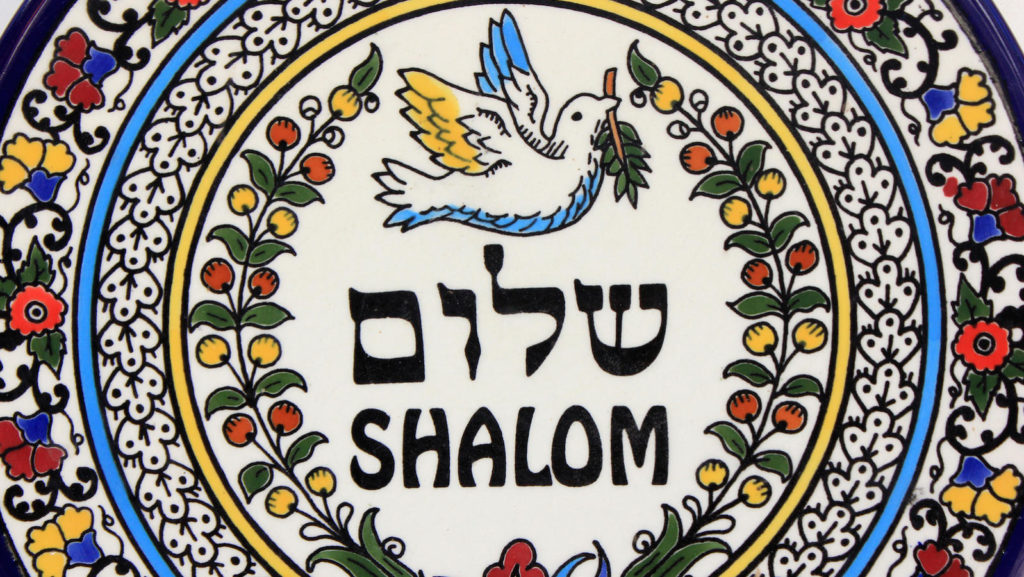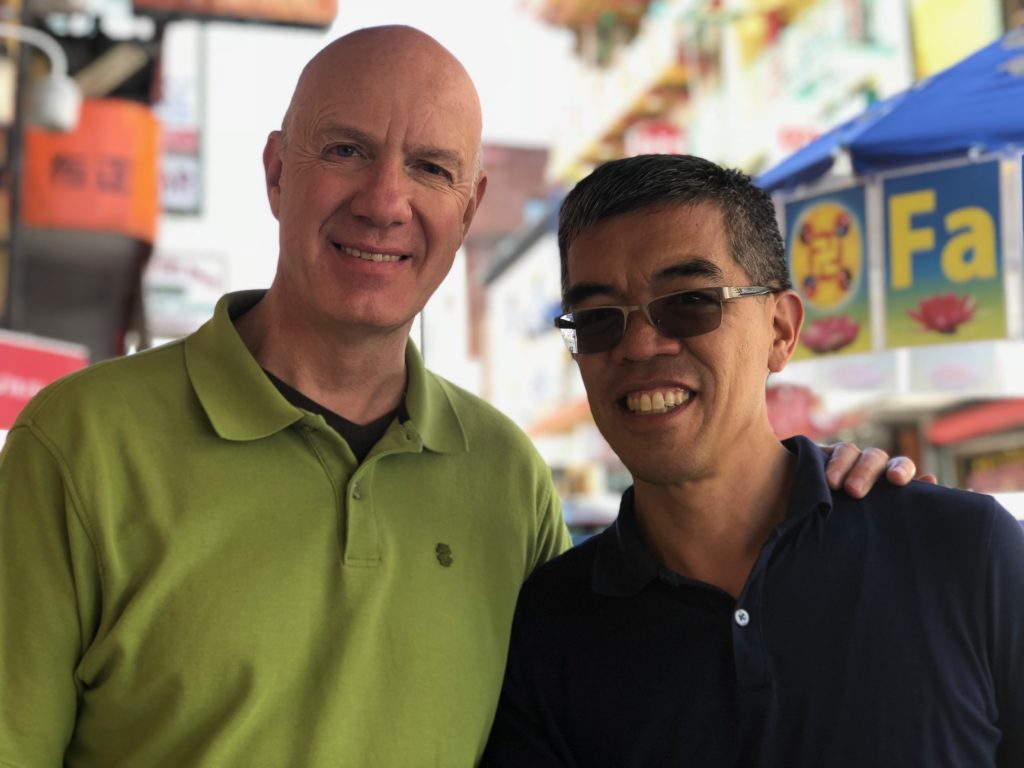The Journey of Writing a Chapter for “Honor, Shame, and the Gospel”
At last! “Honor, Shame and the Gospel” is now available. You can buy it here:
- from the publisher
- or from Amazon.
I am honored to have a chapter included in the book and excited at the range of endorsements from across multiple disciplines. To describe what the book is about and why it was written, let me share just a fragment of one of these endorsements.
“(The editors) have brought together an astonishingly diverse selection of essays illuminating the long-neglected dynamics of shame and honor in our understanding of the Christian message. The result is nothing less than a tour de force in exposing the narrow frame of guilt-innocence which has dominated theological and ecclesial discourse for centuries, and, in the process, opening fresh avenues for a deepened understanding of the far-reaching power of the gospel for all peoples.” – Timothy C. Tennent, Ph.D., President. Professor of World Christianity. Asbury Theological Seminary
Fellow sojourner and co-author Jackson Wu posted a few of these endorsements via Patheos. Check it out here. In addition, the table of contents can be found at the end of this post.
What follows is not so much a book review but a telling of how my work with Kingdom Rice found inclusion into this ground-breaking book. In essence, the story I share here is about my quest to find safe space, and learning to create safe space for others.

I never aspired to “one day get a chapter published alongside pioneers in the field.” IT was never a thought; it was outside the realm of possibility. My focus was keeping my head to the ground, engaging the God-given contexts around me with pictures I believe would bring them honor, peace, shalom. The public platforms I was given in each of those was the result of being inviting into the space to lift up the bigger vision. My chapter centers around engaging a plurality, a diversity of people in a way that moves them closer to the Master of all safe-space creators, Jesus. Kingdom Rice as a non-profit, applies a holistic pedagogy to equip others to do the same, to create safe space, especially for the vulnerable, the oft-rejected, and even those initially suspicious of me and my faith.
Creating safe spaces sets the environment for belonging. My intersection with different tribes documented in these blog posts…the interfaith community, the bike coalition, Chinatown, and LGBTQ friends share the quest of safe space, safe space to gather in sacred spaces, safe space to bike without assumed “car-first” assumptions, safe space to play as children, safe space to journey towards a solid identity. Safe space is the context to address injustice and inequity because it roots the conversations in the God-given worth and dignity of each person. Growing these safe spaces grows belonging.
And belonging creates safe space for oneself. Peace. Shalom. People questing this together creates community, community in diversity, ultimately embodied in Jesus, and ultimately expressed in heaven.

San Francisco and cities like it uniquely express this “heaven,” but not without conflict and tension. The commission and utopian pictures of the early church in Acts 1-2 took decades to work through; it was anything but instant. But those decades document the intricacies of the quest, battling monumental implicit biases, systemic corruption and othering. It took the Spirit’s work; it took repeated disruptive dreams piped into the burned-in racist hearts of early leaders of the new order followed by immersion into “despised” spaces to change the biases. It could not be done without “higher power.” What my 12-step friends proclaim every week (the need for a higher power) should be normative for everyone. What Jesus accomplished in the flesh (Jesus pulled no fast ones), God did supernaturally in Acts – same Spirit, different modality. This heaven breaking-in was holistic, systemic, reversing the displacement, the rifts, and ultimately one’s own shame. Cities like San Francisco, with its dense 7mi by by 7mi parameters don’t give a lot of private space (hence its popular use of parks and streets as its living rooms). Its hyper diversity can be smelled in the air: herbs, pastries, firecrackers, and garbage all waft about. In the evening, diversity seeps through the walls because most homes are joined together, conduits for sound, languages, instruments, movies. Cities like San Francisco should be seen as the laboratory for Christians, not seen as a infested place to be avoided nor colonized with disconnected, dishonoring tactics.
How sad that the hearts of many who claim Jesus have withdrawn from cities from SF. I’m not throwing sprawl nor suburbs under the bus. I will say that our biases are shaped by reality outside our front windows, what we see, smell, feel, touch. I’m not ignoring the brokenness either. When I open my windows, I hear and smell both beauty and brokenness. With the pandemic, I’ve had the chance to speak to more students than before via Zoom classrooms, and I always challenge them to evaluate their own world view; is it big enough to embrace the realities of the city? For many church goers in the West, it is not. San Francisco in particular is seen as Sodom and Gomorrah, “Psycho San Francisco” one video called it. Instead, cities are beautiful because God adopted cities, because he sees them as beautiful…and we get to know God better through the beauty of cities.
I planted Kingdom Rice to grow this heaven on earth. “Rice” refers to non-white cultures, the dominant culture of the West. The “rice” metaphor represents invitation, an act that confers honor. “Kingdom” denotes the grandness and the efficacy of this story to reverse the storyline of even the most marginalized. Together with the word “rice,” this is the story able to invite and move a diversity of narratives towards a grand experience of shalom, heaven, peace…one that’s not disconnected or disembodied, but one that’s fully present. When Jesus gave the Sermon on the Mount, I believe this was the Kingdom invitation he gave, embodied in his presence and acts.
I’ve felt outed for much of my life...emotionally underdeveloped growing up, often the shortest one, part of the “midget” class in grade school physical education. I’m self-proclaimed autistic. Meaning, I learned to drive a stick shift (transmission of choice) before I actually drove one, learned to play drums without a drum set (thanks to MTV), and learned to program computers without one. I did it all in my head. It also meant I was picked on often, and picked last for games, and often heard “Steve’s too young to know” in a way that outed me from peers. High school was a social nightmare. 4’11” coming in with the social intuition of a 4th grader perhaps. I had not talked to anyone outside my immediate circles for ten years (I stopped talking when I was about four). My clothes never matched, and I had JUST started to brush my teeth regularly. I was part of the “outed” club.
I had flashes on being included here and there. My autistic computer skills got me early jobs in the industry, eventually as a ACAD engineer helping design ASIC chips. Paychecks was full, as were benefits, but the job was empty without a bigger holistic framework to live in. Such was my spiritual life too, predicated on Scripture memory, and eventually memorizing Greek verb declensions …the same way I memorized ASCII codes to better debug Assembly code. I received a few honors here and there. I gave really good technical presentations. It was empty without a connection to the Kingdom story.
My experience of Christianity, a label I rarely use because of its current baggage, shifted from religion to relationship through Jesus, specifically, almost therapeutically by placing myself as the one being invited into a family where I was honored down to my core. This is the Prodigal Story, or pretty much the story of every encounter with Jesus, except for those calloused with knowledge and tradition. Embodying the inclusive love of Jesus was not an overnight event, and far from over. The shalom of SF’s peoples have been gifts to me, portals that pointed me to the identity God always had for me, one of belovedness. Yes you read rightly; I believe God used many people who hold different worldview to point me to the person of Jesus.
So began acquaintance with “others” who on the surface, don’t seem to have much in common with me, differences in world view, culture, and sexual orientation. In my experience, most beyond the extremely flamboyant don’t wear those labels on their skin. They just are. And I began to see stories come alive, and even in my own story. Admittedly, I want to see these stories come to fruition, unto true shalom. and I believe that ultimately comes through Jesus.
As I began to heal from my years being “othered,” I learned how to imagine space for others, and to give this safe space for others, and eventually for entire groups at a time. This is not passive friendship “evangelism” (another term I rarely use, in spite of its precise etymology). At a few birthday parties, I began storytelling people’s stories as a part of the birthday program. That kind of tactic grew into events like the Interfaith liturgy came from, or interviews with atheist friends like this artist. My 50th birthday, where I invited dozens from these aforementioned circles was simply a natural progression of sharing my story in a way that would bring shalom to the many in the room who don’t identify with my world view.

For me, it’s simply been a journey of growing into belovedness, from a hurt place of feeling othered and outed Justice and race issues find their shalom in identity and connection, in healing and joining together. But it’s going to take work in the right direction, in our innermost core. I pray the chapter I submitted to this point serve this end.
Using traditional metrics, I should have been “outed” from this book, especially when I look at the pedigree of authors in the book. I know most of them. I’ve logged hours upon hours reading and/or dialoging with them and in my humble opinion, they are head and shoulders above me in terms of their scholarship and authorship. Again, I don’t belong in this book given their credentials as authors, professors, missiologists, some with book titles of their own. But this book doesn’t go by traditional metrics. Neither does my inclusion make me more of a scholar nor an author, but it does make space for the importance of the concepts embodied into the everyman – the storyline of Jesus’ mission. I’m extremely honored to be a part of this volume.
I give a lot of credit for my chapter’s inclusion to the vision of the book’s editors. Thank you Werner and Chris, for the overall vision of the book and all the editing behind the scenes. Werner, thank you for your personal invitation to me to submit a chapter. Both of us knew my submission might not be accepted, but you believed in me, even before I wrote my first word. You embodied the Jesus I follow when you invited me. Your vision for my chapter was an act of vulnerability and humility, making a statement that we need representation of this honor-shame paradigm from pluralist contexts like San Francisco. You’ve given your power and influence to the often passed-over work on the streets like San Francisco, and gave us all a seat at the table. Now our work of creating safe space, shalom, can proliferate to many more. From the bottom of my heart, thank you! (picture of me and Werner follows)

Though still vastly underdeveloped, there are an increasing number of books on honor-shame. But many are far too academic or set in far away places that the average North American reader can’t identify with, except for the mission-minded person, the supposed “elite” that churches platform on bulletin boards throughout the country.
But Jesus was a common man, with common Greek, but with realistic, inclusive, love that pulled heaven and shalom into the present in a way that’s able to meet all the tension and racism, and able to bring justice to its true relational end. Safe space is not without tension, conflict, and grief to work through. But better than that, it provides the shalom space by which all these things can be worked through. It’s a story that engages with the most shamed and hidden, and one that lifts it up unto glory, unto honor, in the way of the greatest heroes, in the way of Jesus. And the invitation into this space is for everyone. That’s what my chapter is about, and that’s what this book is about. It’s about my journey, and I hope you’ll find your story in it too.
Peace,
Steve Hong
p.s. Table of Contents
Honor, Shame, and the Gospel: Reframing Our Message and Ministry
Foreword-Veli-Matti Kärkkäinen: “Honor, Guilt, Shame, Face, and Forgiveness: A Brief Theological and Interdisciplinary Sketch.”
Chapter 1-Steven Hawthorne: “The Honor and Glory of Jesus Christ: Heart of the Gospel and the Mission of God.”
Chapter 2-Jayson Georges: “Honor and Shame in Historical Theology: Listening to Eight Voices.”
Chapter 3-Tom Steffen: “A Clothesline Theology for the World: How a Value-Driven Grand Narrative of Scripture Can Frame the Gospel.”
Chapter 4-Jackson Wu: “Saving Us from Me: Cultivating Honor and Shame in a Collectivist Church.”
Chapter 5-E. Randolph Richards: “The Shaming of Jesus in John.”
Chapter 6-Mako A. Nagasawa: “Empowering Personal Healing through the ‘Medical Substitutionary Atonement.’”
Chapter 7-Steve Tracy: “Abuse and Shame: How the Cross Transforms Shame.”
Chapter 8-Lynn Thigpen: “The Dark Side of Orality.”
Chapter 9-Arley Loewen: “Must Honor Clash with Humility? Transformed Honor within the Emerging Church in Muslim Societies.”
Chapter 10-Steve Hong: “Sharing God’s Love in an Urban, Pluralistic Context.”
Chapter 11-Cristian Dumitrescu: “Discipleship in Asian Honor Cultures.”
Chapter 12-Audrey Frank: “The Muslim Woman’s Journey from Shame to Honor.”
Chapter 13-Rich James: “An Honor-Shame Gospel for Syrians Displaced by War: Jesus Christ as Good Shepherd and Honorable Patron.”
Chapter 14-Katie Rawson: “A Gospel That Reconciles: Teaching about Honor-Shame to Advance Racial and Ethnic Reconciliation.”
Chapter 15-Nolan Sharp: “The Book of Samuel: A Reconciling Narrative.”